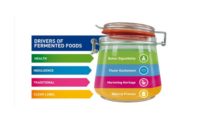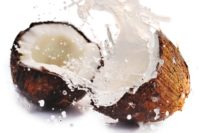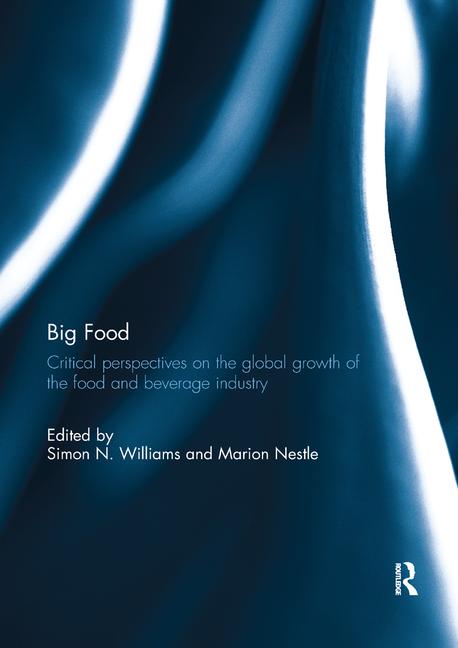The Potential of Natural Nanoparticles

Food scientist David Julian McClements at the University of Massachusetts Amherst recently received a three-year, $400,000 grant from the U.S. Department of Agriculture to study the design and fabrication of all-natural nanoparticles for delivering oil-soluble vitamins and other nutrients in food products.
Encapsulation using nanoparticles has been used safely for years in the pharmaceutical industry for drug delivery, says McClements, an expert in nutrient encapsulation. "Using nanoparticles to encapsulate nutrients has many potential benefits," he adds. "But consumers and manufacturers want products made from all-natural ingredients, which is often technically difficult to achieve. Also, because the technology is new, it’s important to ensure these ingredients are safe to consume."
Few consumers realize that humans have been consuming nanoparticles in natural foods since prehistoric times, in milk and beer, for example, McClements points out. Casein micelles in milk are nano-sized protein-calcium-phosphate particles produced naturally by a cow to deliver nutrition to her calf in a readily digestible form. And the polysaccharide compounds in beers are often nano-sized.
"Certain kinds of nanoparticles in food have been in our diet for a long time, and they have not proved bad for us, but it is still important to ensure that any newly created nanoparticles are safe," he says.
At present, nutrient nanoparticles are made using high-energy machines that break food material into tiny particles, which are then stabilized with surfactants, but costly machines and high energy demands make this process quite expensive. "If we can find a less expensive, low-energy way to make stable, all-natural nanoparticles from such ingredients as milk proteins or tree gums, for example, it would be a big benefit to the industry," McClements explains. "But it’s very difficult to accomplish with all-natural ingredients."
He and colleagues plan to create all-natural food-grade nanoparticles with different sizes, electrical properties, chemical compositions and digestibility for different applications in the food and beverage industries. One reason manufacturers want to use more nanoparticles in food is that tiny particles give nutrients more stability and a longer shelflife. For example, using nanoparticle vitamins in beverages prevents the vitamins from accumulating in the cap and being thrown away, as often happens now.
Another advantage of nanoparticles is that they do not scatter light in the same way conventional particles do, so using nanoparticles lets liquids appear crystal clear. A conventional nutrient droplet is roughly 100-10,000 nanometers (nm) across, while a nanoparticle is about 5-50nm. "At that size they remain translucent and clear," McClements says.
"Perhaps the most interesting factor in using nano-sized encapsulated nutrients is that the smaller particles increase the bioavailability of oil soluble nutrients," he adds. This is assumed to be an enhancement but research should be done on actual absorption to confirm it, making sure the absorbed dose is not so high as to be harmful or toxic.
"With some nutrients, such as carotenoids, you only get a small fraction of the nutrition when you eat it in conventional foods. Using nanoparticles would change this, making much more available to the body, so we must test each one."
In closely related research, McClements is working with his food science research colleagues at UMass Amherst to explore encapsulation and bioavailability of other nutrients. Eric Decker is experimenting with nano-delivery systems for omega-3 fatty acids and other healthy lipids, including how to stabilize and incorporate them in foods. Yeonhwa Park is investigating the biological fate of food-grade nanoparticles and microparticles in the digestive tract. Hang Xiao is investigating nano-encapsulation and bioavailability of anti-cancer agents from citrus fruits and will eventually test their potential toxicity in animals.
From the April 27, 2012, Prepared Foods’ Daily Update
Looking for a reprint of this article?
From high-res PDFs to custom plaques, order your copy today!






